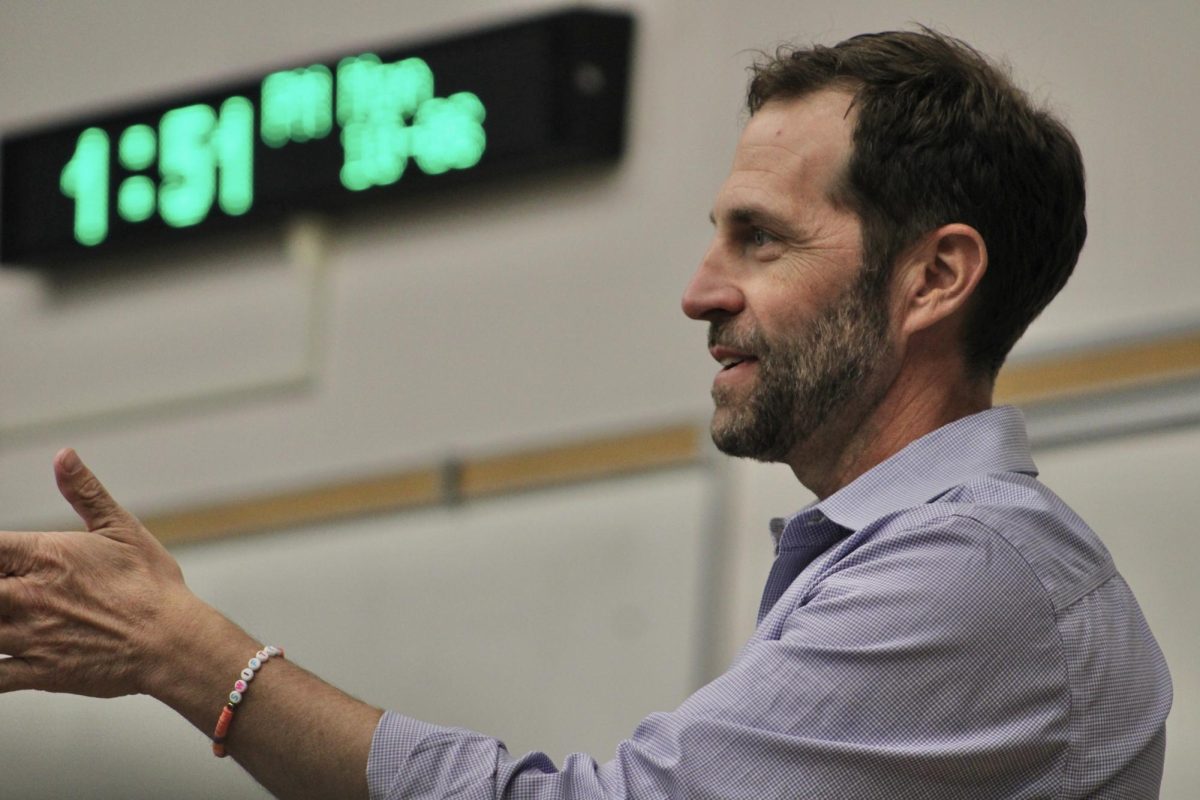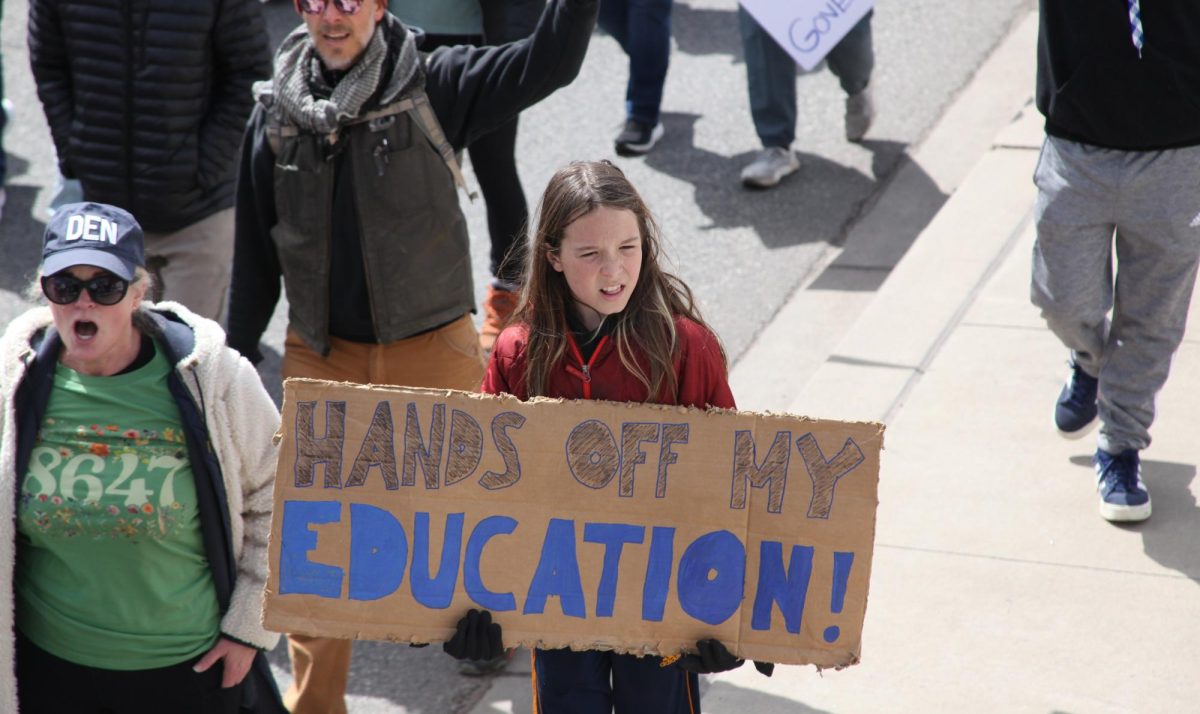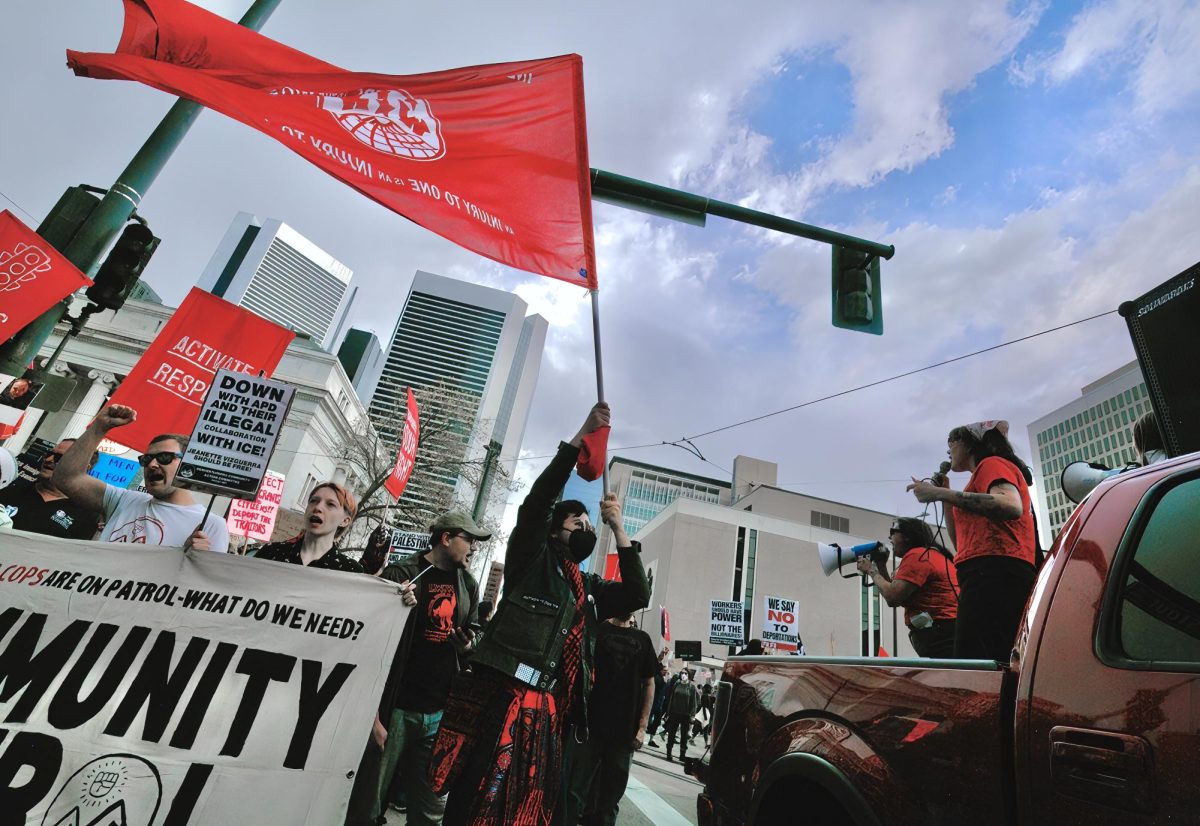First, a West Middle School student posted a racist rant on a group chat on Sept. 26, using slurs and saying Black people shouldn’t exist. Then two Campus Middle School students on Nov. 30, allegedly under the influence of alcohol, filmed themselves repeating variations of the “N word” on social media.
Both videos elicited the involvement of the National Association for the Advancement of Colored People (NAACP), who publicly responded after both incidents.
“We want kids to be able to learn and you can’t learn in an environment that you feel is not conducive to learning and that you don’t feel safe in,” NAACP Denver Branch President Sondra Young said. “It is important that we teach kids…that that language will not be allowed in a school.”
Some students at Creek, like sophomore Black Student Union member Abigail Shimelis, are disappointed by the inevitability of these conflicts. “It’s unfortunate for me to say but I’m honestly not surprised about these videos,” Shimelis said. “Videos like this have been around since forever and especially with our generation, they’ve become more common.”
West Principal Mónica García declined to speak on the issue, but an email was sent to parents after the video came out.
“We must create school cultures where all students and staff feel safe, supported, and valued,” García’s email, sent three days after the video surfaced, read. “At West Middle School, we celebrate diversity as an asset that strengthens our school and community.”
García, in her letter, also stressed parents to talk about these issues at home, then urged the community to report similar incidents.
“Please engage in conversations with your child(ren) around discriminatory behavior and hate-motivated language,” she wrote. “If you see or hear about racist or discriminatory behavior, please report it immediately to the school administration so we can swiftly investigate it.”
Like García, Young also emphasized the importance of cultural inclusion. “Culture is everybody. America is a melting pot…like a beautiful quilt that needs all parts of it to make it beautiful,” she said.
The Cherry Creek Schools District (CCSD) responded to these incidents quickly, according to CCSD Public Information Officer Lauren Snell.
“Administration, and law enforcement acted immediately to investigate both situations. Students engaging in this type of behavior have and will face consequences,” Snell said. “Students found to be responsible faced significant discipline and their parents were responsive to the severity of the situation.”
Campus Middle School Principal Lisa Staal, like the district, said that Campus has a systematic response to these issues. “We take numerous steps to proactively address appropriate behaviors with all of our students,” Staal said. “No one event changes how we work to ensure positive behaviors.”
Assistant Principal Kevin Uhlig is in charge of discipline at Creek. He said that the levels of punishment for derogatory comments or behavior, in varying cases, could include supervised study, Saturday school, suspension, and expulsion. In the case of expulsion, students will be sent to an expulsion school, where they are placed for up to one year.
Shimelis believes consequences are necessary, too. “If these types of things were to happen at Creek, I would want appropriate punishments for those who created the videos,” she said. “Those people need to understand [people of color] are still being targeted and affected to this day by harmful videos, even at the middle school and high school level.
Uhlig said that students are punished so they can learn from their mistakes; harmful comments don’t just affect innocent students; it doesn’t fit in with the learning environment.
“I don’t think there’s a place for it in schools. I don’t think it’s appropriate for kids. Kids don’t come to school to hear racist slurs,” Uhlig said. “The way we deal with things as an administration, to quickly address and resolve these situations…helps prevent things from escalating.”
Students who make derogatory comments are sometimes enrolled in courses at a Denver nonprofit, The Conflict Center, led by Executive Director Beth Yohe. Classes there are meant for education and conflict resolution. Some suspended students, who have made those hurtful comments, are assigned to a course. CCSD is a client of the nonprofit.
“Our mission is to equip people with the practical skills to embrace and transform everyday conflict,” Yohe said. “Our approach and all the work that we do is to be educational and have a restorative response.”
According to her, empathy and compassion is one of the lessons primarily involved with the course. “Sometimes we make poor decisions in the moment and aren’t thinking it through…we want to have an opportunity to really understand the impact when people are targeted,” Yohe said.
Uhlig’s worry with The Conflict Center is that the classes enroll quarterly. “Let’s say a kid does something in September, but you don’t offer that first class until October,” Uhlig said. “Is it still as impactful for that kid to be in that class two months after the act or the discipline was determined?”
Yohe believes that restorative education can make a difference. Using pre- and posttesting, The Center has seen statistical improvements in student behavior. 83% of students said that “the course positively impacted [them],” and 76% reported an “increased knowledge in tools to deal with conflict.”
While Yohe admits that the majority of work The Conflict Center does with CCSD is reactionary rather than preventative, Young thinks that historical education could cut off more incidents before they happen.
Young said that if schools can emphasize the fact that the Black population has made widespread contributions to American society, derogatory comments and bigotry may become less frequent.
“There’s so many things that we have done that nobody knows about,” Young said. “You have to know what we’ve been facing so you can understand how we can move forward.”
If schools can start educating, Young says the problem would fade and schools could produce a safer environment.
“Black history is American history. Black people have been here all the time…in America, building, making, creating,” Young said. “If you want change, be the change you want to see.”
Additional Contributions by Serenity Hurtado










Dr. DEW | Jan 23, 2024 at 8:23 AM
This will continue to happen from one generation to the next. You’re not going to tell me the parents or gurdians of these racist children are unaware their children are “racist”. Most likely this has been instilled at home.
The young lady Shamlis is correct, this is not a new problem. I dealt with racism during middle and high school forty years ago,my children twenty years ago. The only thing that changes is how the racism is generated. Social media has provided a platform for this behavior. Children have access to more information than ever before.
What also find interesting is how protected these children are. Just like bullies. Everyone knows who the victims are. These same racist children will be in corporate America as CEO’s and other positions where the same behavior will continue.
Prevention isn’t lucrative or the mindset of this country. We wait until the fire starts,to put it out to reduce loss of life and property damage. How many more Black children have to be damaged before a solution is developed?
The continuous bantar and the use of diversity and inclusion is nothing but a bureaucratic smoke screen.